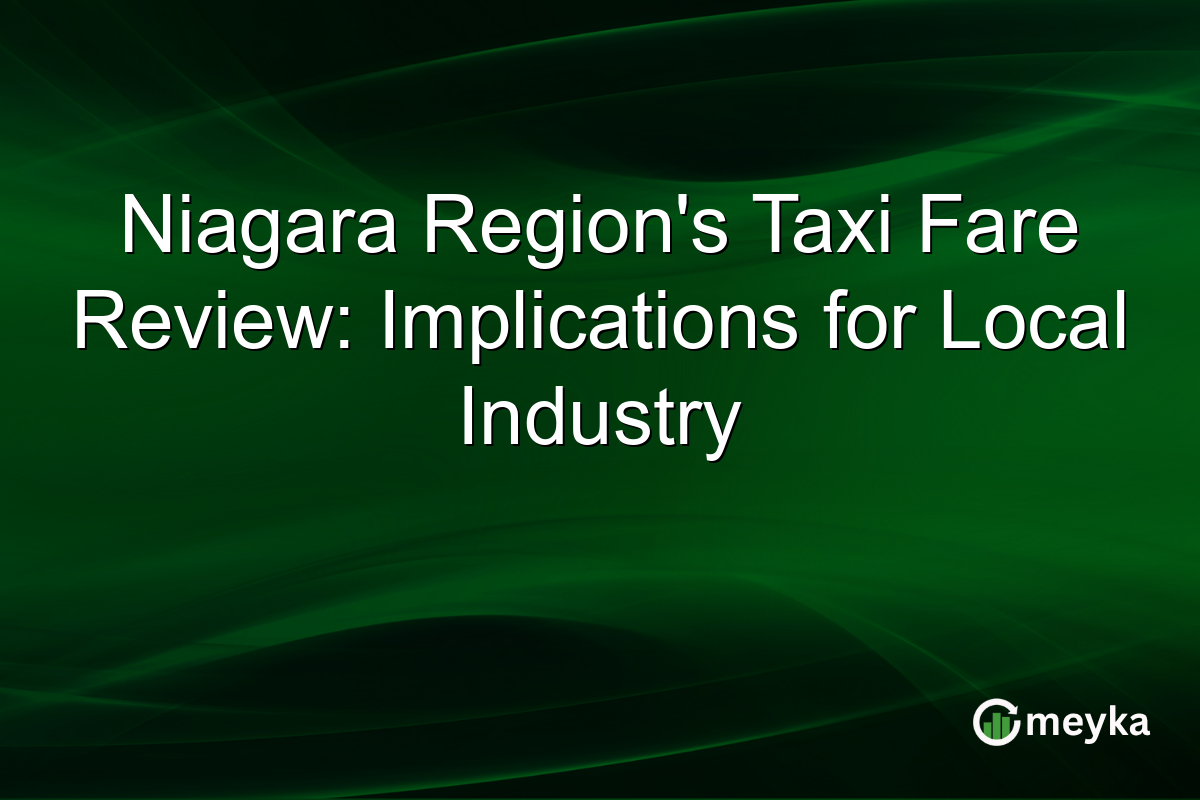Niagara Region’s Taxi Fare Review: Implications for Local Industry
The Niagara Region is currently undertaking a thorough review of its taxi fare structures. This initiative aims to align regional fare policies with current best practices in the transportation sector. The focus of the review is on ensuring that fare policies are fair and competitive while accounting for driver sustainability and passenger affordability. This could lead to significant changes in the local taxi industry, affecting drivers and consumers alike.
Understanding the Review Process
Niagara’s taxi fare review is part of its broader effort to modernize transportation regulations. The review focuses on the Taxicab and Transportation Network Company By-law, which governs fare policies in the area. The aim is to make the pricing structure more transparent and competitive, ensuring both passengers and drivers benefit. This can include adjustments in pricing formulas, consideration of dynamic pricing models, or standardization across companies.
Impact on Local Taxi Operators
Potential changes could impact local taxi operators by introducing new fare structures. Presently, many operators feel regulatory pressure to balance driver wages and fare competitiveness. Adjustments made by the review might address these concerns. But the impacts could vary widely, from lowering fares to increasing operational costs, which may prompt operators to alter service offerings or efficiency strategies. Understanding these changes is crucial for both operators and their workforce.
Passenger Pricing and Affordability
One of the primary goals of the review is to ensure fare affordability for passengers. If successfully implemented, fare adjustments could lead to a more consumer-friendly pricing strategy. This may encourage more people to use taxis instead of personal vehicles or ride-sharing services. But consumer reaction will largely depend on whether the proposed changes actually make taxi services more economical and convenient compared to existing alternatives. Read more.
Final Thoughts
The Niagara Region’s taxi fare review is poised to reshape the local transportation landscape. Its impact will depend on the specifics of the adjustments made to the fare structures and how well they are communicated and implemented. Operators may need to adapt quickly to remain competitive, while passengers could benefit from more transparent and possibly lower pricing. The review highlights the need for collaboration between regulators, operators, and consumers to achieve a balanced outcome. As these changes unfold, leveraging AI-powered insights from platforms like Meyka could provide valuable foresight for stakeholders looking to navigate this evolving environment.
FAQs
Niagara’s taxi fare review is an evaluation of existing fare policies to align them with best practices, aiming to update and potentially change how taxi fares are structured in the region.
Operators may see changes that could impact fare competitiveness and sustainability, possibly leading to adjusted service offerings or increased operational costs.
The main goals are to ensure fare competitiveness, transparency, and affordability for passengers while maintaining driver income sustainability. Adjustments could reflect these priorities.
Disclaimer:
The content shared by Meyka AI PTY LTD is solely for research and informational purposes. Meyka is not a financial advisory service, and the information provided should not be considered investment or trading advice.






